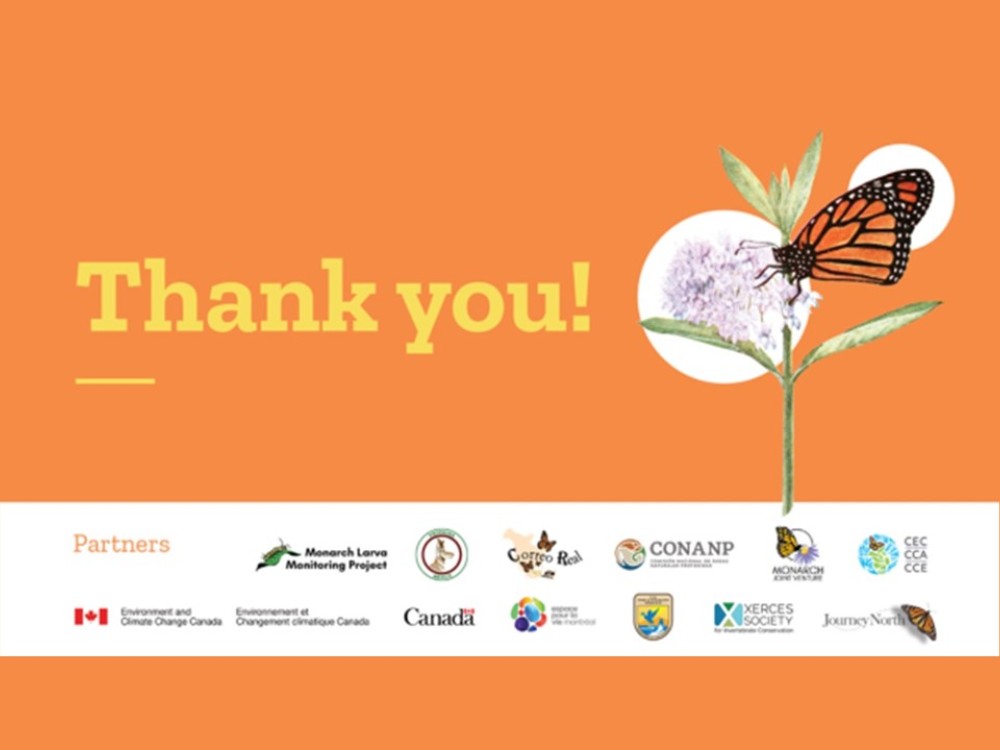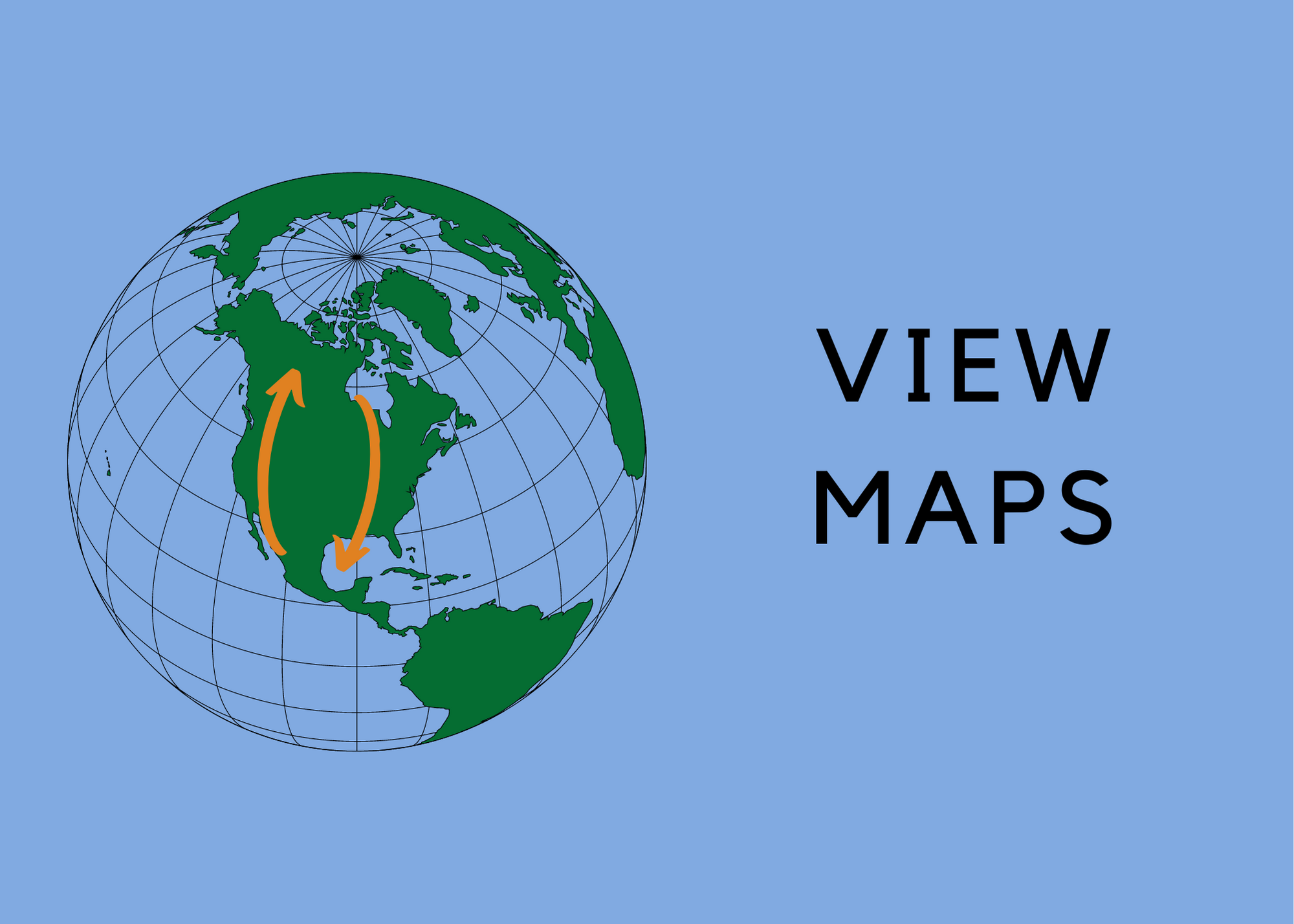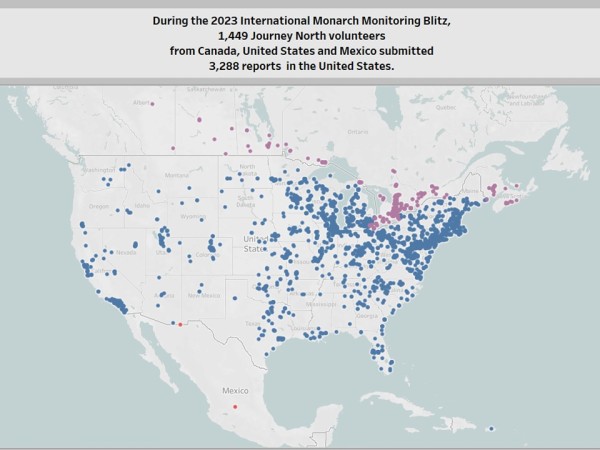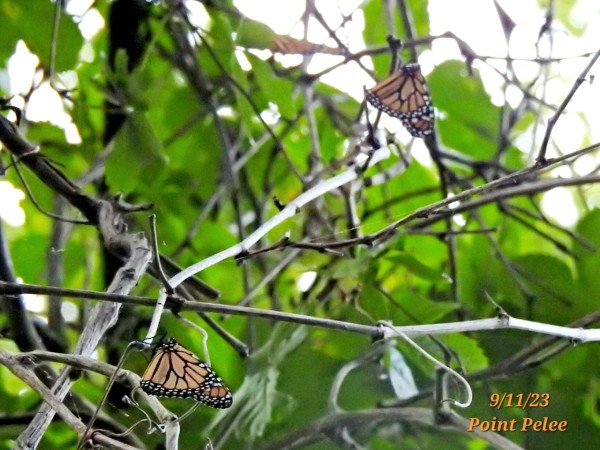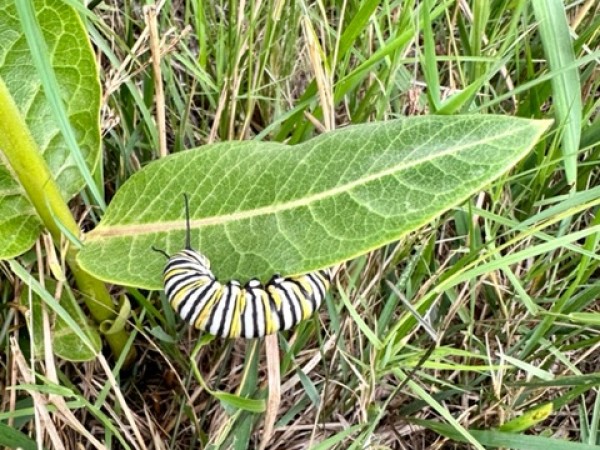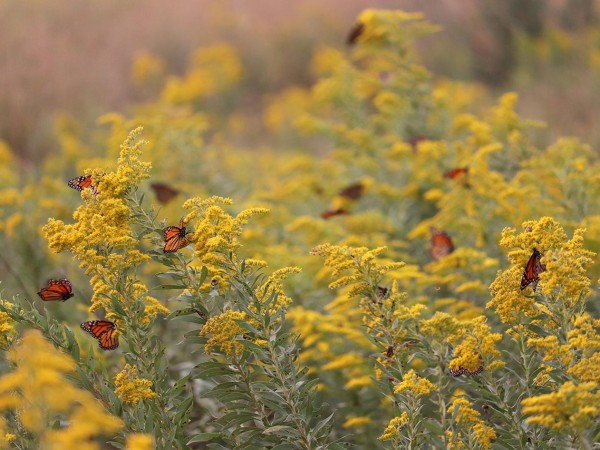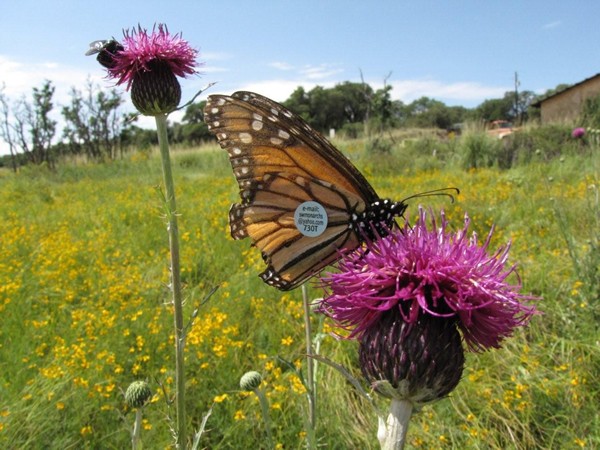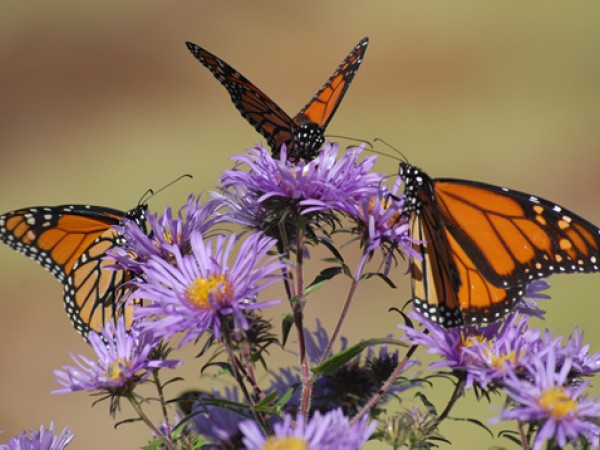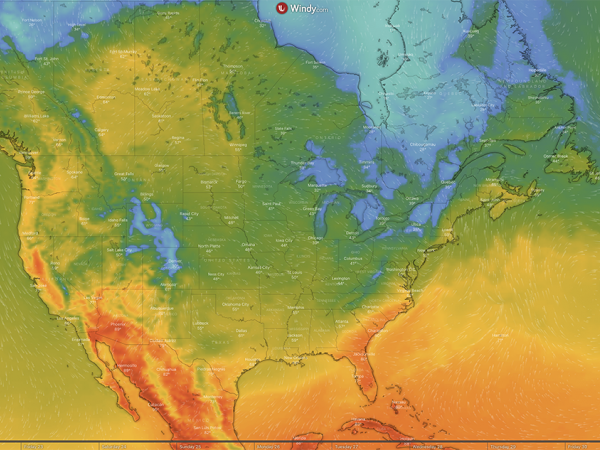Many Thanks for Monitoring with Journey North!
The 7th International Monarch Monarch Blitz
International cooperation and volunteerism play a crucial role in protecting monarch butterflies. The International Monarch Monitoring Blitz offers a unique opportunity to work together across borders to develop more effective strategies for conservation. For the past three years, Journey North volunteers have contributed their time and expertise, fostering a global community dedicated to safeguarding monarch habitat and monarch migration. We are deeply grateful to all who have contributed to these Blitz events. This year, 1,449 volunteers submitted 3,288 observational reports. We created this visualization to provide an overview of your observational reports. You made the Blitz a success!
Read more>>
Eastern Monarch Population
For the Eastern population of monarchs, fall roosts are being reported as far south as 39°- 41°N in the Midwest. Roosts are frequently reported along the Great Lakes; peak migration events are occurring in similar locations. Other peak migration hot spots are along the mid-Atlantic coastal region. Many observers also are reporting on monarch adults, eggs, larvae, and milkweed they are seeing in their areas. Please continue to report all stages of monarchs and milkweed throughout the fall.
Read more in the Eastern Monarch Fall Report #1>>
Western Monarch Population
Gail Morris is back to help us learn about what is happening with the Western monarch population. She notes that monarchs are on their way with higher than anticipated numbers flying this fall. Large numbers of monarch larvae are still being found in fields of northern Utah – a harbinger of more adult monarchs to come. Where are monarchs now? Gail encourages everyone to report their monarch observations to Journey North.
Journey North Data In Action: Using Monarch Observation Records to Support Federal Land Management
Bruce E. Young, Chief Zoologist and Interim Chief Scientist with NatureServe, shares how data from participatory science projects, like Journey North, have contributed to their work in managing federal lands.
Read more>>

